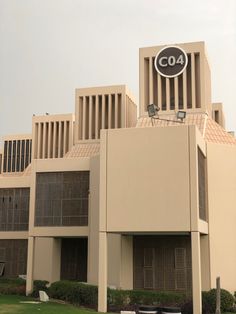International Branch Campuses
International Branch Campuses (IBCs) are specialized academic outposts or branches established by universities in foreign locations to offer programs and attract a global student body. These campuses operate under the direct guidance of their home institutions and often feature the same curriculum, faculty standards, and degree requirements as the primary institution. They are designed to promote educational exchange, global partnerships, and the dissemination of knowledge across borders.
IBCs are especially popular among prestigious universities seeking to expand their global footprint, offer specialized programs in a foreign market, and contribute to the host country’s education system by providing access to international-level academic offerings.
Benefits of International Branch Campuses
- Global Exposure: Students gain exposure to the academic resources, research opportunities, and teaching standards of a world-class institution while studying abroad. They benefit from the same academic rigor without leaving their home country or region.
- Cultural Diversity: International campuses attract students from different regions, fostering cross-cultural exchanges and creating a diverse learning environment.
- International Networking: Being part of a global university network helps students build connections that can benefit them in international business, research collaborations, and other professional pursuits.
- Access to Top Faculty: Students often benefit from courses taught by world-renowned faculty who may split their time between the home and branch campuses, providing an enriching academic experience.
- Work and Research Opportunities: International campuses often partner with local industries, creating internship, job placement, and research opportunities tailored to the region.
Examples of Prominent International Branch Campuses
- University of Nottingham – Ningbo Campus (China) Established: 2004 | Location: Ningbo, China
- Offers programs in areas including Engineering, Business, and Humanities.
- Emphasizes strong research output and a globally diverse faculty.
- New York University (NYU) – Abu Dhabi Campus (UAE) Established: 2010 | Location: Abu Dhabi, UAE
- Provides undergraduate and graduate programs in subjects like Arts, Science, Engineering, and Business.
- Strong focus on global student engagement and innovative research.
- University of Melbourne – Melbourne Business School, Dubai (UAE) Established: 2004 | Location: Dubai, UAE
- Provides a top-tier MBA program tailored to professionals seeking advanced management skills.
- Recognized for its strategic collaborations with industries across the Middle East.
- Tsinghua University – Shenzhen International Campus (China) Established: 2017 | Location: Shenzhen, China
- Specialized in engineering, innovation, and entrepreneurship.
- Part of Tsinghua’s global academic strategy, fostering connections with technology companies.
- King’s College London – Qatar (Qatar) Established: 2011 | Location: Doha, Qatar
- Specializes in programs in Health, Law, and Business.
- Known for creating leaders in healthcare and policy in the Middle East.
Tuition Fees at International Branch Campuses
Typically, fees for programs at international branch campuses may vary depending on the location, program type, and the home university. Generally, international branch campus tuition fees are structured as follows:
| Program Type | Tuition Fee Range (per year) |
|---|---|
| Undergraduate Programs | $15,000 – $30,000 USD |
| Graduate Programs (Masters) | $20,000 – $40,000 USD |
| PhD Programs | $25,000 – $50,000 USD |
Living Costs at International Branch Campuses
The living costs of studying at international branch campuses will depend on the location of the campus. These costs often include accommodation, food, transport, and personal expenses. For example:
| Expense Type | Cost Range (per month) | Annual Estimate (12 months) |
|---|---|---|
| Accommodation (On-Campus) | $500 – $1,500 USD | $6,000 – $18,000 USD |
| Private Accommodation | $1,000 – $2,500 USD | $12,000 – $30,000 USD |
| Food | $300 – $600 USD | $3,600 – $7,200 USD |
| Transportation (Public) | $50 – $150 USD | $600 – $1,800 USD |
| Utilities & Miscellaneous | $150 – $300 USD | $1,800 – $3,600 USD |
Visa Requirements
Students attending an International Branch Campus typically require student visas based on the host country’s regulations. Typical requirements include:
- Student visa application
- Enrollment letter from the international branch campus
- Financial documents proving the ability to cover tuition fees and living costs
- Valid passport and health insurance
Visa processing time and fees will vary based on the host country, with processing taking 2-6 weeks and fees ranging from $50 to $250 USD.
Transportation Costs
Branch campus locations often provide students with different public transport options. In addition, many universities provide shuttles between the campus and surrounding neighborhoods to ease the commute.
| Transport Type | Cost Range (per month) |
|---|---|
| Public Transport (Buses, Metro) | $50 – $100 USD |
| Taxis & Ride-Hailing (Uber) | Varies, more expensive than public transport |
For international travel, students often travel to and from major international airports near their respective branch campuses. Flight prices vary depending on the destination, but general fare ranges are as follows:
| Flight Cost | Range (per ticket) |
|---|---|
| Local Destinations | $150 – $500 USD |
| International Destinations | $300 – $1,500 USD |
International Branch Campuses represent a global effort to provide students with a rich, comprehensive academic experience and open doors to countless opportunities worldwide. Through their diverse offerings and global locations, students benefit from world-class education while experiencing different cultures, industries, and networks.







Reviews
There are no reviews yet.